new and used avionics
 Sell Your Avionics Here
Sell Your Avionics Here
|
Avionics List
new and used avionics |
 Sell Your Avionics Here
Sell Your Avionics Here
|
Buying Safety Tips |
Avionics Articles and Reviews
|
Picture this scenario; "Turn right to heading 235, direct whixw intersection, climb and maintain 1-2 thousand. You're in luck if you have a two axis autopilot, simply turn the heading bug to the desired heading, and adjust the pitch wheel (if you have one) to the rate of climb you desire. Aircraft owners with single axis autopilots can turn the heading bug to the desired heading but would have to manually trim the aircraft in the pitch mode. OK, everything is gong fine and you are busy trying to find that "whixw" intersection. You have no idea where it is and unbeknownst to you, the vacuum pump packs up and quits. The question is this; just how would your autopilot react to a failed vacuum pump? Would it or issue an alert so to notify the pilot a problem would exist? You may be surprised at the answer.
Recently John Frank and I were discussing how different types of
autopilots reacted when their vacuum and/or electrical powered inputs had
failed.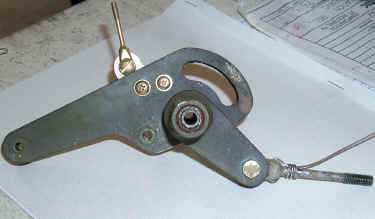 It seems that lately a few aircraft have fallen from the sky and the suspicion
is a vacuum failure in conjunction with an autopilot failure. At first I thought
the answer was easy; just look in the POH and see what it says about a vacuum
failure as related to the autopilot. To my chagrin, I found only a few POH's
contained any information that would tell the pilot what to do with the
autopilot should the vacuum or electric system fail. I checked seven aircraft
that had aftermarket autopilots installed and none of them had the required
flight manual supplement aboard the aircraft. Of course trying to read the POH
with a failed vacuum or electric system is a chore in itself so study your
emergency procedures before the emergency arrives. Our goal in this series of
articles is to present you with as many different makes of autopilots as
possible, give you a brief description of how the system works along with just
how the autopilot will react should a vacuum or electric failure arises. We will
also discuss some vacuum/electric instruments that can give you false
indications when a vacuum/electric failure arises. While my suggestions and
analysis of different autopilots should aid in a system failure, nothing beats a
well-trained pilot equipped to handle an emergency. As I've always said, if
you can only spend money in one area of your flying, spend it on training.
During VFR conditions frequently put your autopilot through all of its modes to
verify it is working properly. Later in this article we will also discuss the
pros and cons of back up vacuum and electrical systems also.
It seems that lately a few aircraft have fallen from the sky and the suspicion
is a vacuum failure in conjunction with an autopilot failure. At first I thought
the answer was easy; just look in the POH and see what it says about a vacuum
failure as related to the autopilot. To my chagrin, I found only a few POH's
contained any information that would tell the pilot what to do with the
autopilot should the vacuum or electric system fail. I checked seven aircraft
that had aftermarket autopilots installed and none of them had the required
flight manual supplement aboard the aircraft. Of course trying to read the POH
with a failed vacuum or electric system is a chore in itself so study your
emergency procedures before the emergency arrives. Our goal in this series of
articles is to present you with as many different makes of autopilots as
possible, give you a brief description of how the system works along with just
how the autopilot will react should a vacuum or electric failure arises. We will
also discuss some vacuum/electric instruments that can give you false
indications when a vacuum/electric failure arises. While my suggestions and
analysis of different autopilots should aid in a system failure, nothing beats a
well-trained pilot equipped to handle an emergency. As I've always said, if
you can only spend money in one area of your flying, spend it on training.
During VFR conditions frequently put your autopilot through all of its modes to
verify it is working properly. Later in this article we will also discuss the
pros and cons of back up vacuum and electrical systems also.
The Cessna ARC 200A Autopilot: The ARC 200A has what they call "Direction" instead of heading. In other words, this 200A is basically a wing-leveler with some navigation inputs but this autopilot doesn't track them very well. The 200A looks at roll information provided by the G-300A turn coordinator. This turn coordinator not only provides the pilot with turn and bank information but turn information to the 200A autopilot computer. This system does not require any input from the vacuum system; in other words, it an all-electric system.
What Happens with My 200A if I lose Vacuum? Nothing, because this
autopilot doesn't look at any vacuum instruments as an input. During an
emergency, simply pull out the turn knob, this will level the wings of the
aircraft. If need be, you command the aircraft to roll left or right by simply
turning the turn knob the direction you desire to turn. 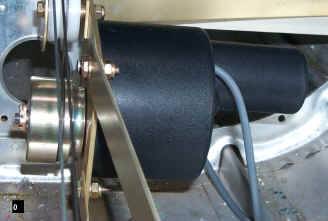 If
the knob is turned fully one direction or the other, the maximum limits are
standard rate if the system is working correctly. This really aids when turning
the aircraft when the vacuum DG has failed and you're dependent on the wet
compass. Remember the 200A is a single axis autopilot, thus no pitch control is
incorporated.
If
the knob is turned fully one direction or the other, the maximum limits are
standard rate if the system is working correctly. This really aids when turning
the aircraft when the vacuum DG has failed and you're dependent on the wet
compass. Remember the 200A is a single axis autopilot, thus no pitch control is
incorporated.
What Happens if My Turn-Coordinator Fails? The autopilot will follow the
failed instrument. Disengage the autopilot.
The Cessna ARC 300A Autopilot: The 300A is much like the 200A above except it gets information from the directional gyros heading bug also and in most cases, this the directional gyro is vacuum driven. This autopilot uses the same electrical turn-coordinator for roll reference, as does the above 200A. Basically the pilot turns the heading bug on the directional gyro to the heading he/she wishes to fly and the autopilot will align the aircraft with that heading. Actually this isn't a bad autopilot in the one hundred series aircraft but doesn't have the capacity to fly larger aircraft such as the two or three hundred series aircraft.
What happens if I lose My Vacuum System or Directional Gyro? If you did in fact lose vacuum or the DG during a turn, the worse case is the aircraft would make circles at a standard rate turn. I'd recommend pulling out the turn knob and placing it in the center position. This would take the heading bug out of the system and level the wings of the aircraft; which is a good thing during a vacuum failure. The pilot could now turn the aircraft left or right via turning the turn knob the desired direction. Turning the turn knob in either direction full travel would result in a standard rate turn. This could come in handy if you were trying to turn to a heading on the wet compass. When you are on partial panel is a good time for an autopilot and the 300A could be used to aid in such situations.
What Happens if My Turn-Coordinator Fails? The autopilot will follow the
failed instrument. Disengage the autopilot
_________________________________________________
The Cessna ARC 300: Not to be confused with the 300A or the dinosaur 300 IFCS, which is an autopilot that should not be trusted in IFR conditions in my opinion. This autopilot is very old and was problem prone from the day it was installed in the aircraft. The ARC 300 autopilot gets its heading information from the vacuum directional gyro heading bug and its roll information from a pick off located inside of the vacuum driven horizon indicator. I personally like autopilots that are "rate based" much like the 300A over systems that use the horizon as a roll and often pitch reference. They seem to have fewer problems and cheaper to maintain but our ARC 300 doesn't fall into that group; being the heading input along with roll inputs are generated in two different vacuum instruments leads to serious problems if the vacuum pump or horizon indicator fail.
What Happens if My Vacuum Pump Fails? A vacuum pump failure with this system is very dangerous. The autopilots roll input from the horizon could cause the aircraft to continue to roll constantly and under worst conditions roll the aircraft upside down; not a good thing in IFR conditions. At the first sign of a vacuum problem or failure, turn the ARC 300 off until the problem is cured. Again, I don't recommend ever engaging this autopilot in IFR conditions.
What Happens if My Horizon Indicator Fails? Well, if you lose your vacuum pump rest assured your horizon indicator will fail if it's vacuum driven. The bad news is there is no warning flag to let you know there is a failure, only the vacuum gage which if often out of our scan. If the horizon indicator fails there's a chance the aircraft could roll inverted if the failure is not determined early, much like losing the vacuum pump. Failure of the horizon indicator not only would cause the autopilot to incorrectly fly the aircraft but would display erroneous pitch and roll information. If you have even the slightest idea that your horizon indicator is not reading correctly, turn off the autopilot, cover the instrument and have fun flying that partial panel you've been practicing for years.
What Happens if the Directional Gyro Fails? Unless the DG fails because
of a vacuum pump failure, the worse situation is the autopilot would fly circles
at standard rate turns. Should you loose the DG, use the turn knob to level the
aircraft and make coordinated turns during heading changes as needed. Seldom
does a directional gyro have catastrophic failure; thus if yours fails be
prepared for some other instrument in the vacuum system to fail soon.
________________________________________________
The ARC 400 Series
The next autopilot we will discuss is the ARC 400/A/B. While the modes of
operation are somewhat different between models, they all need a vacuum and an
electrical source to function properly. If you followed the last three avionics
articles in this magazine you probably have a good understanding of the ARC 400B
two-axis autopilot. Pitch and roll information is fed to the computer via a
couple of pick-offs located inside the horizon indicator. 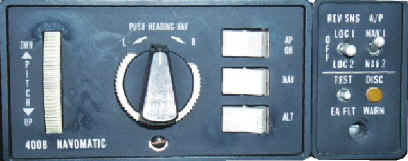 As
the aircraft moves around its axis, an error is generated in the horizon
indicator and is fed to the computer; which in turn moves the ailerons or
stabilizer or trim tab. If the aircraft exceeds a pre-determined pitch attitude
or roll, the autopilot will automatically disengage. In a fantasy world here's
what would happen if you lose vacuum. As the horizon gyro starts to spin down,
it would lose erection and start to tilt. Once the rotor speed starts to slow,
the gyro will roll off to one side or the other in the roll mode or display a
major pitch error either up or down; thus as the gyro exceeds it's roll or
pitch limits, the autopilot senses this and disengages. This is good because if
the autopilot didn't disengage it could (and would) roll the aircraft upside
down or point it toward the ground or straight up, who knows where it would be
aimed. In IMC conditions you may never notice this, well until it's too late
but that's why the autopilot has these disconnect safe guards built in should
you loose the vacuum horizon.
As
the aircraft moves around its axis, an error is generated in the horizon
indicator and is fed to the computer; which in turn moves the ailerons or
stabilizer or trim tab. If the aircraft exceeds a pre-determined pitch attitude
or roll, the autopilot will automatically disengage. In a fantasy world here's
what would happen if you lose vacuum. As the horizon gyro starts to spin down,
it would lose erection and start to tilt. Once the rotor speed starts to slow,
the gyro will roll off to one side or the other in the roll mode or display a
major pitch error either up or down; thus as the gyro exceeds it's roll or
pitch limits, the autopilot senses this and disengages. This is good because if
the autopilot didn't disengage it could (and would) roll the aircraft upside
down or point it toward the ground or straight up, who knows where it would be
aimed. In IMC conditions you may never notice this, well until it's too late
but that's why the autopilot has these disconnect safe guards built in should
you loose the vacuum horizon.
But hold on, remember is said this is the way it operates in a fantasy world. Now here's what can and does often happen. You are flying along IMC and the air is smooth. ATC commands a turn and climb along with a new fix (which by the way you haven't a clue where it's located). At this point you turn the heading bug to the new heading, dump the altitude hold and crank in 700Ft/min rate of climb with the pitch wheel. Now you are busy finding that new intersection but unbeknownst to you, your vacuum system has failed. What I have seen more often than not is the following. The horizon spins down but the gyro inside stays almost centered or close to it. At that point the aircraft could easily roll itself upside down because the roll information from the horizon indicator doesn't change as the aircraft roll angle changes. Within a matter of a minute or two, the aircraft could be upside down. Because the horizon gyro never exceeded the roll angle to the point it would disengage the autopilot, the autopilot just kept turning the aircraft until the machine went inverted and you know the rest of the story. This scenario can and does happen.
What Happens if My Turn Coordinator Fails? These autopilot systems do not receive any information from the turn coordinator. Some yaw damp systems do but we will discuss the yaw damp system in another article.
What Happens if My Horizon Indicator Fails? The best you could hope for is the gyro would roll off to one side as it spooled down and disengage the autopilot. If you even suspect the horizon is failing, shut the autopilot off. Fly the aircraft by hand, it's not that hard. Ever wonder why Cessna horizons do not have a warning flag? We will discuss that in our last segment of this article.
What Happens if My Vacuum HSI or DG fails? The 400 series autopilot will still keep the wings level and the pitch/altitude hold functions will still work as advertised. I'd recommend pulling out the turn knob, this will level the wings; from there you can turn this knob in the direction you wish to go and use the heading shown on the wet compass. If you turn this knob full in either direction the aircraft will bank at a standard rate turn. Most HSI indicators have a "Heading" warning flag.
What Happens if I lose My Vacuum Pump? Unless the horizon gyro tumbles and disconnects the autopilot you've got a big problem; who knows what the aircraft will do. Monitor the vacuum warning system; at the first sign of a vacuum failure or problem, disengage the autopilot and be prepared to fly using partial panel. Here's a question for you. Which instruments in your aircraft are vacuum driven and which ones are electric? Don't know? Best talk to your flight instructor or avionics shop.
_________________________________________________
The King 200/150 Series
The King KFC-200 and KAP 200 have been very reliable autopilots. We seldom
see them in the shop and when they do have problems it's often a servo or bad
horizon indicator. On the other hand, in my humble opinion, the KFC-150 is a
piece of junk. 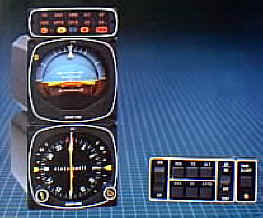 This
system is full of monitors but the problem is that the monitor systems often
fail. Yes, the KFC-150 is the newer of the two systems but still they are prone
to problems. The KFC-150 is a safe autopilot it just fails often and is
expensive to keep up and running.
This
system is full of monitors but the problem is that the monitor systems often
fail. Yes, the KFC-150 is the newer of the two systems but still they are prone
to problems. The KFC-150 is a safe autopilot it just fails often and is
expensive to keep up and running.
Both of these systems operate much like the ARC 400B mentioned above. The King 200/150 receives their roll and pitch information from the vacuum horizon indicator. Each of the King systems use the KCS-55A compass system, which is all electric. The vacuum driven horizon indicator does not employ a low vacuum flag or gyro disabled flag. In other words, just like the ARC 400B, unless you are watching the vacuum gage, you have no idea if the horizon is failing or not. Determining a horizon is failing in IMC conditions is not fun and that's one heck of a time to try and figure out if the horizon is acting up or not. Even though both the KFC-200 and the ARC 400A are two axis autopilots with vacuum horizon indicators that supply pitch and roll to their autopilot computers; that's all they have in common. The KFC-200 works most of the time and the 400B is broken most of the time.
What Happens if My Turn Coordinator Fails? These autopilot systems do not get any information from the turn coordinator.
What Happens if My Horizon Indicator Fails? The best you could hope for is the gyro would roll off to one side as it spooled down and disengage the autopilot. If you even suspect the horizon is failing, shut the autopilot off then. Fly the aircraft by hand, it's not that hard.
What Happens if My HSI Fails? The King 200/150 series uses an electric HSI. The nice thing about this if you do lose your vacuum system, you've still got your heading system. Without the HSI you can just turn on the flight director and engage the autopilot, it will hold the wings level. These systems do not have any means to roll the aircraft except with the heading bug or navigation input. If you are in the "heading mode" and the HSI fails "flag drops into view" the autopilot will disengage.
What Happens if I lose My Vacuum Pump? Unless the horizon gyro tumbles and disconnects the autopilot you've got a big problem; who knows what the aircraft will do. Monitor the vacuum warning system; at the first sign of a vacuum failure or problem, disengage the autopilot and be prepared to fly using partial panel. At least you still have your HSI.
_________________________________________________
Century III/IV/2000
These Century Autopilot systems work much like their counter parts, the ARC
400 series and the King KFC-150/200. Roll and pitch information is again derived
in the horizon indicator and sent to the computer for processing. Like the other two axis systems we've talked about, the Century has an
altitude hold module also that monitors static pressure but basic pitch is still
picked off the horizon indicator.
Like the other two axis systems we've talked about, the Century has an
altitude hold module also that monitors static pressure but basic pitch is still
picked off the horizon indicator.
The Century system can be driven from its own DG or just about any manufacturer's HSI. It's not uncommon to see a Century III with the heading system manufactured by King. In fact, Century even has two different HSI systems of their own; one is all electric and the other is vacuum AND electric. We will dive into HSI operation in our next session. In general, the Century autopilot isn't a bad system; most of the problems we see with the Century are pitch oscillations and/or bad connections at the plastic connectors.
What Happens if My Turn Coordinator Fails? These autopilot systems do not get any information from the turn coordinator. The Century I single axis system uses the turn coordinator; we will discuss that system later.
What Happens if My Horizon Indicator Fails? The best you could hope for is the gyro would roll off to one side as it spooled down and disengage the autopilot. If you even suspect the horizon is failing, shut the autopilot off then. Fly the aircraft by hand, it's not that hard.
What Happens if My Vacuum HSI or DG fails? The Century series autopilot will still keep the wings level and the pitch/altitude hold functions will still work as advertised. I'd recommend pulling out the turn knob, this will level the wings; from there you can turn this knob in the direction you wish to go and use the heading shown on the wet compass. If you turn this knob full in either direction the aircraft will bank in a standard rate turn. Most HSI indicators have a "Heading" warning flag. Century does sell an all electric HSI; of course this keeps working if the vacuum pump fails.
What Happens if I lose My Vacuum Pump? Unless the horizon gyro tumbles and disconnects the autopilot you've got a big problem; who knows what the aircraft will do. Monitor the vacuum warning system; at the first sign of a vacuum failure or problem, disengage the autopilot and be prepared to fly using partial panel. I bet at this point you'd wish you had that all electric HSIJ
_________________________________________________
With the exception of the ARC 200/300A series, all of our autopilot discussion was based on horizon based autopilots; meaning they received their roll and pitch information from the aircraft attitude indicator. In all of the autopilots we discussed prior, the horizon was a vacuum driven indicator. In my opinion, vacuum instruments do not have the reliability of electric instruments and let's not forget that pesky vacuum pump has a habit of failing without notice and at the worst possible time. I've noticed throughout the years that for some reason horizon based autopilots seem to generate more problems, cost more to repair and in general don't fly the aircraft as well as "rate based" autopilots (exception would be the King KFC-200). I'd be willing to say that 90% of the autopilot problems we find are problems related in some way with the horizon indicator. We often find what we call "Pitch Porpoise" problems with the Century and ARC system but seldom does this problem arise with a Rate Based autopilot system.
A "Rate Based" autopilot system gets its roll information from the turn coordinator. The turn coordinator for most parts is a bulletproof instrument that normally will run for years without needing any type of repair or overhaul. Rate based autopilots receive their pitch information from a very sensitive transducer. The transducer provides a signal to the autopilot computer for pitch and altitude hold. The transducer works great if properly installed. The static port installation is very critical for the transducer, install it in the wrong area and the aircraft will never be stable in the pitch or altitude mode. If I were going to purchase a new autopilot I'd only consider a rate-based system. Why? If properly installed, the rate-based system will give you years of trouble-free operation; you soon would understand why it's called the "Maytag Repairman's" autopilot.
All S-Tec Autopilots are Rate-Based.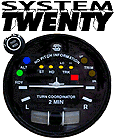 Some S-Tec systems are only single axis autopilots but that roll axis is
rate-based just the same. If a heading system is used with the S-Tec autopilot,
it may be a directional gyro or a HSI. The HSI may be all-electric such as the
King KCS-55A HSI system or vacuum/electric driven. Some of the less expensive
S-Tec autopilots may not have a heading system at all; while the heading system
is an option, I can't imagine owning an autopilot without it. The S-Tec has
proven to fly the aircraft quite well and reliability is excellent. Recently a
company in England bought out S-Tec but fortunately, the hardware is still
American.
Some S-Tec systems are only single axis autopilots but that roll axis is
rate-based just the same. If a heading system is used with the S-Tec autopilot,
it may be a directional gyro or a HSI. The HSI may be all-electric such as the
King KCS-55A HSI system or vacuum/electric driven. Some of the less expensive
S-Tec autopilots may not have a heading system at all; while the heading system
is an option, I can't imagine owning an autopilot without it. The S-Tec has
proven to fly the aircraft quite well and reliability is excellent. Recently a
company in England bought out S-Tec but fortunately, the hardware is still
American.
What Happens if My Horizon Indicator Fails? Just cover up the failed instrument and keep flying. The S-Tec system could care less; all functions will work per the Pilot's Guide.
What Happens if I Lose My DG or HSI? You can still operate the S-Tec in the "Stabilized" mode, meaning the autopilot will keep the wings level. The pilot can turn the bank knob and command rolls in either direction to align up with the wet compass. The System 20/30 will still track the navigation receivers if connected. If the aircraft has GPSS, this system too will continue to function, in fact the GPSS could care less about the HSI, horizon or failed vacuum pump.
_________________________________________________
What Happens if My Vacuum Pump Fails? See the above paragraph and cover up the failed instruments. The neat part about a rate-based system is when you need it the most (failed vacuum pump or gage) it still functions; not true with a horizon-based system.
What happens if I lose My Turn Coordinator? The S-Tec system monitors rotor speed of the turn coordinator and will disconnect the autopilot when the rotor speed drops to a predetermined RPM. Of course, the autopilot quits at this time.
What Happens if My Electrical System Quits?
The autopilot will
disconnect, be prepared to fly partial panel. You will lose all of your
electrical avionics, which can make for a bad day under IFR conditions.
_________________________________________________
The King KAP-140 is a two-axis autopilot that is installed in Cessna aircraft manufactured today and it too is rate based. At first this autopilot was problem prone but now it seems to be fairly reliable. I've never seen a KAP-140 installed aftermarket, only in new, factory aircraft. This autopilot operates much like the S-Tec autopilot and has the same "What ifs" as far as failures are concerned. Not many of these out there but I thought I'd mention it anyway.
The Century One System. The Century One system consists of a turn coordinator, which houses the so-called autopilot computer, a roll servo and the optional navigation track board. There are no "legal" heading inputs to the Century One at this time. This system is all electric and again, only will look at the VOR/GPS with the optional nav-track card. This system does a very poor job of tracking the VOR/GPS and in my opinion isn't worth connecting. The little Century One is basically a wing leveler at best. Its main purpose in life is to keep the wings level when turned on as long as electrical power is supplied to the turn coordinator and the coordinator is functioning properly.
What Happens if My Vacuum Pump, DG and/or Horizon quit? Nothing! The Century One will continue to operate due to the fact it's all electric. Be sure to cover the failed instruments during IFR conditions.
What Happens if My Turn Coordinator Fails? Because the autopilot computer is part of the turn coordinator, the autopilot will fail but still remain engaged until the pilot disengages the unit.
I'm sure I missed some autopilot models but our goal was to cover the most
popular models. If you have a question on a model not covered during these
sessions be sure to give me a call or drop me an e-mail. Again, frequently check
out all the modes of your autopilot and be aware of the systems it interfaces
with and of course, practice flying the aircraft without the autopilot in IFR
conditions. If you have any questions regarding autopilot operation, discuss it
with your flight instructor or give us a call.
_________________________________________________
Another popular piece of avionics nowadays is the HSI. There are several different types and many of them look the same but their gyro sources vary a lot. I'll cover the ones Avionics West often sees not only from the point of how the unit works but what happens to the HSI when its input source disappears.
The Ever Popular King KCS-55A is an all-electric system.
There are more
KCS-55A HSIs in the field today than all other systems combined.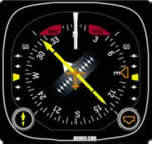 The HSI compass card rotates via an electric gyro located somewhere in the
aircraft. The signal from the aircraft flux gate is fed to the gyro system, thus
it's called a slaved HSI. The pilot never has to set the compass heading; this
is done automatically via the slaved KG-102A. There is a slaving meter that
moves around somewhat, this meter shows the pilot the error between the fluxgate
and the electric gyro. Normally you never have to touch the toggle switch or the
push buttons on the slaving meter. I've got an article about HSI systems due
in this magazine in October, if I don't get behind. Normally the KG-102A and
KI-525A will run 800-1000 hours before needing an overhaul. With the exception
of the Sandel EHSI, this system is the best unit on the market today. A new King
HSI system list for $12,500.00, installation is not included.
The HSI compass card rotates via an electric gyro located somewhere in the
aircraft. The signal from the aircraft flux gate is fed to the gyro system, thus
it's called a slaved HSI. The pilot never has to set the compass heading; this
is done automatically via the slaved KG-102A. There is a slaving meter that
moves around somewhat, this meter shows the pilot the error between the fluxgate
and the electric gyro. Normally you never have to touch the toggle switch or the
push buttons on the slaving meter. I've got an article about HSI systems due
in this magazine in October, if I don't get behind. Normally the KG-102A and
KI-525A will run 800-1000 hours before needing an overhaul. With the exception
of the Sandel EHSI, this system is the best unit on the market today. A new King
HSI system list for $12,500.00, installation is not included.
What Happens if My Vacuum System Fails? Nothing, this HSI is totally electric and will continue to operate.
What happens if I lose My Electrical System or the HSI Fails? The first thing you will notice is the "heading" flag will fall in view, alerting the pilot the HSI has failed; from that point on you are on partial panel. Cover the failed HSI if possible.
Will Any of my Navigation Needles Still Function if Only the HSI Fails and Not the Electrical System? The localizer, VOR, GPS inputs will continue to function even though the heading card has failed. In fact, even if the King HSI loses power the horizontal position needle will continue to operate but the glide-slope will not.
The most popular Cessna HSI today is the Edo-Aire NSD-360 series. Cessna
installed these units in thousands of single and multi-engine aircraft. 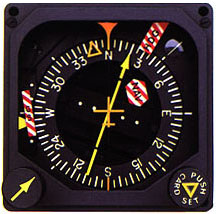 This
compass system is slaved in most cases, but be advised there are many non-slaved
NSD-360's in the field. Even with a slaved NSD-360, you must set the compass
card once the aircraft is running. After that if everything is working as it
should, you shouldn't have to set the compass card again. This HSI, slaved or
not, MUST have BOTH vacuum and electrical inputs in order to operate. In other
words, if you lose vacuum or the electrical system, this HSI compass card will
quit! Expect to pay between $300-500/year to keep your NSD repaired. Sure, you
may not need a repair for several years but when your unit does, it really hits
the ole pocket book. A new, slaved NSD-360 sells in the neighborhood of
$6,900.00 plus installation.
This
compass system is slaved in most cases, but be advised there are many non-slaved
NSD-360's in the field. Even with a slaved NSD-360, you must set the compass
card once the aircraft is running. After that if everything is working as it
should, you shouldn't have to set the compass card again. This HSI, slaved or
not, MUST have BOTH vacuum and electrical inputs in order to operate. In other
words, if you lose vacuum or the electrical system, this HSI compass card will
quit! Expect to pay between $300-500/year to keep your NSD repaired. Sure, you
may not need a repair for several years but when your unit does, it really hits
the ole pocket book. A new, slaved NSD-360 sells in the neighborhood of
$6,900.00 plus installation.
What Happens if My Vacuum System Fails? The HSI compass card will stop turning and "hopefully" the heading flag will fall in view.
What Happens if My Electrical System Fails? The HSI compass card will stop turning and "hopefully" the heading flag will fall in view.
Will Any of my Navigation Needles Still Function if Only the HSI Fails and Not the Electrical System? The localizer, VOR, GPS inputs and glide-slope will continue to function even if the compass card does not move.
The Sandel EHSI. This popular electronic EHSI has taken general aviation
and turned it upside down. For the price of a mechanical HSI and not to forget a
massive increase in features, one could purchase this modern marvel. The Sandel
has the capability of displaying the DME, ADF, #2 RMI, two GPS's, VOR's and
of course ILS. Oh, did I mention marker beacons, weather and special use
airspace just to name a few of the nice features. Avionics West has been installing these nice EHSI's in most of our
installations; our customers love them. Even Mike Busch (who paid Retail by the
way) loves the one we installed in his 310R. If you ever get a chance be sure to
stop by our shop and play with our Sandel EHSI demo unit. Five years ago, I'd
would have never believed we would be installing modern equipment normally
reserved for airliners in general aviation aircraft. What's in store for
general aviation aircraft in the future? Well you'll read about it in July's
issue of this magazine.
Avionics West has been installing these nice EHSI's in most of our
installations; our customers love them. Even Mike Busch (who paid Retail by the
way) loves the one we installed in his 310R. If you ever get a chance be sure to
stop by our shop and play with our Sandel EHSI demo unit. Five years ago, I'd
would have never believed we would be installing modern equipment normally
reserved for airliners in general aviation aircraft. What's in store for
general aviation aircraft in the future? Well you'll read about it in July's
issue of this magazine.
The Sandel can be installed over a dozen different ways. It can be a stand-alone HSI that works with a fluxgate, a Bootstrap off another HSI or DG. There's no way possible to list in this article all the ways to connect a Sandel in our aircraft. The question is, how is the pilot supposed to know what will happen if the vacuum or electrical system fails? One thing for sure, if the electrical system fails, the Sandel will go black and will not display any information. You are probably thinking, well, you will just look at the emergency procedures in the Sandel flight manual supplement and see what it says. Chances are the supplement will not describe in the emergency section what will happen to the Sandel should the vacuum system fail. I'd highly recommend you sit down with the installing agency of your Sandel and have them explain just exactly how the unit is interfaced with other equipment and just what should you expect if the vacuum system fails.